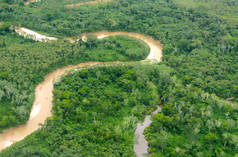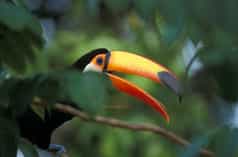Success: Mekong will remain free of dams
 The government has yielded to the protest for now
The government has yielded to the protest for now
Dec 29, 2011
Inhabitants and global environmental organisations protested against eleven planned hydro-electric power plants at the lower length of the Mekong. This caused the governments of Laos, Cambodia, Thailand, and Vietnam to concede today. The decision concerning the planned Xayaburi dam was postponed indefinitely.
Inhabitants and global environmental organisations protested against eleven planned hydro-electric power plants at the lower length of the Mekong. This caused the governments of Laos, Cambodia, Thailand, and Vietnam to concede today. The decision concerning the planned Xayaburi dam was postponed indefinitely.
Now further studies are to be conducted, the governments said publicly. These are meant to assess the effects of hydro-electric power plants on the river and on the people living along its banks. This will put another ten planned dam projects at the lower length of the Mekong on hold.
„Now we are waiting for the technicians already working in this area to be called back and for the governments to announce the timeline for these studies and the questioning of the inhabitants who are affected,” Ame Trandem, Southeast-Asian coordinator for the Organisation International Rivers, explained.
Rainforest Rescue has supported the inhabitants’ protests with two additional rallies. The association is also demanding that these harmful development plans for dams should be abandoned for good.
In April, and again in November, 15,000 people signed in opposition to the dam project. The signatures were handed over by the association to the Thai and Laotian embassies in Berlin and Paris.
The governments subsequently continued their proceedings. The Xayaburi Power Plant was to be built on the national territory of Laos and provide electricity for the neighbouring country, Thailand.
Mekong area is one of the global centres of biodiversity
The Mekong is the lifeline for Southeast-Asia and the largest freshwater fishing area. Millions of people depend on this river basin for their livelihood and sustenance. Flora and fauna of the aquatic ecosystems are extremely diverse and globally unique. This includes freshwater rays with a span of up to four metres, giant catfish, and Mekong dolphins.
But there is also a lot to be discovered on land. More than one thousand hitherto scientifically undocumented species have been reported in the Mekong area in the past few years. New species are added to this list almost every day.
Currently scientists are reporting on more than 200 newly discovered species in the river topography of the Mekong.










